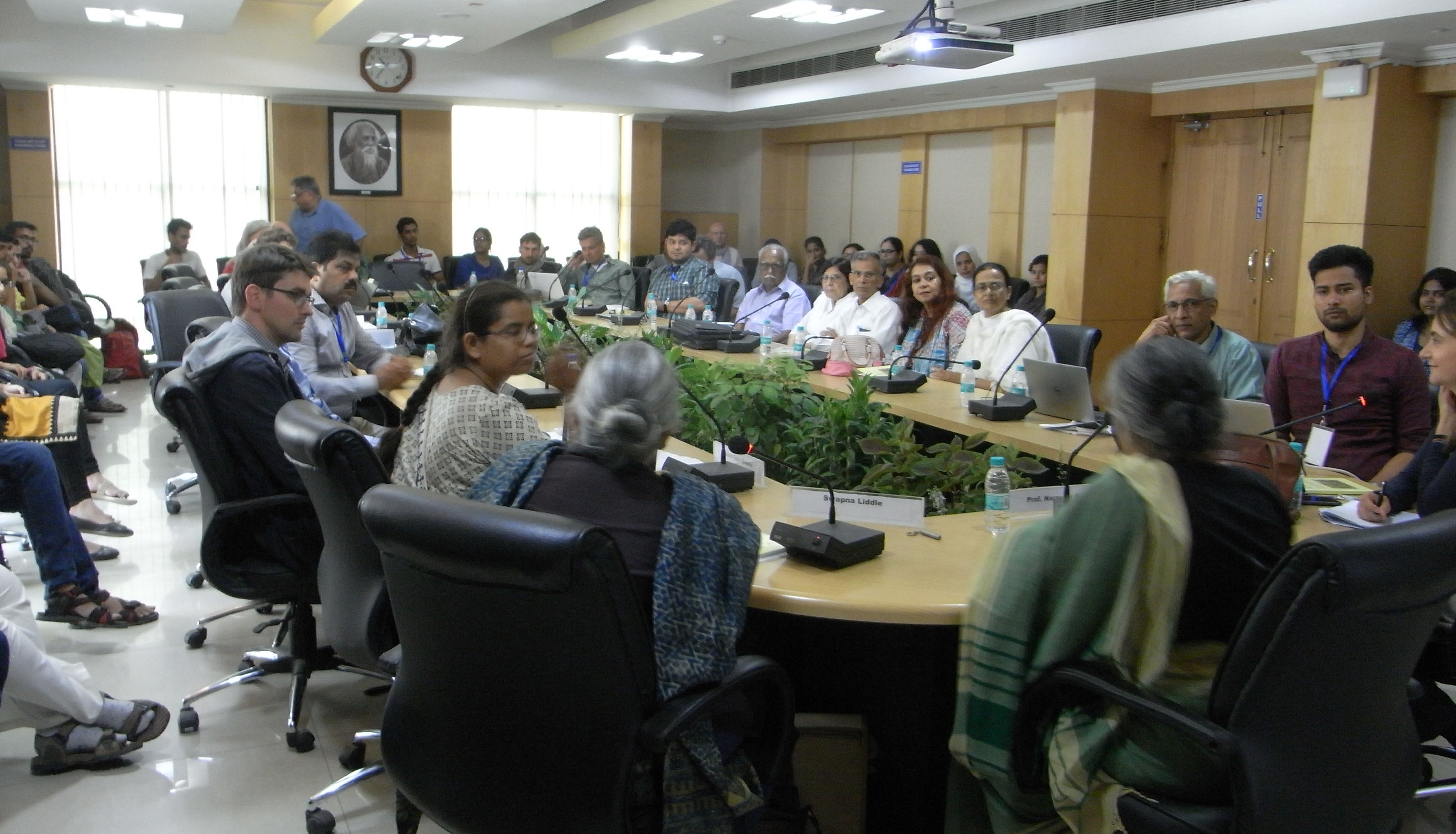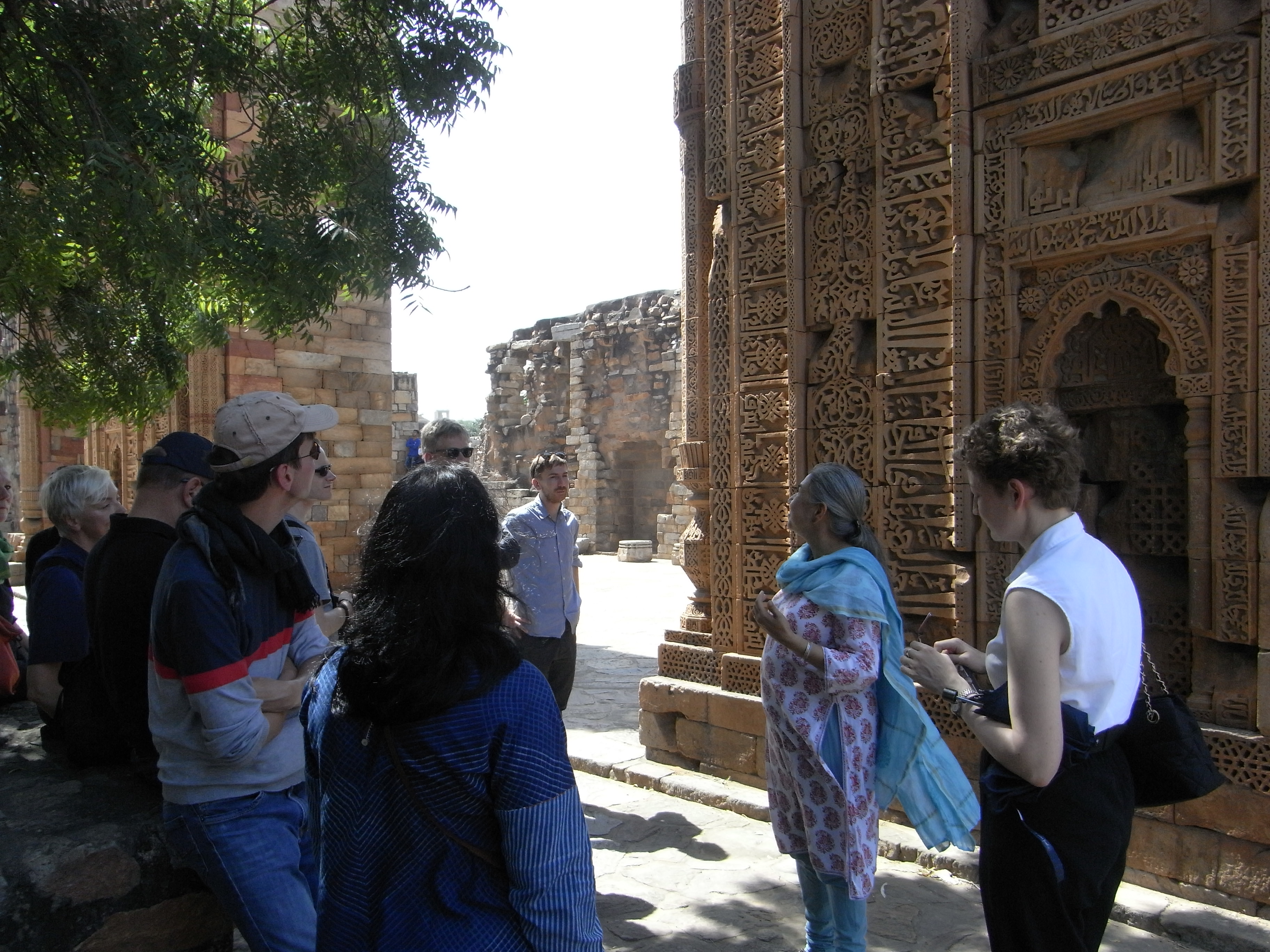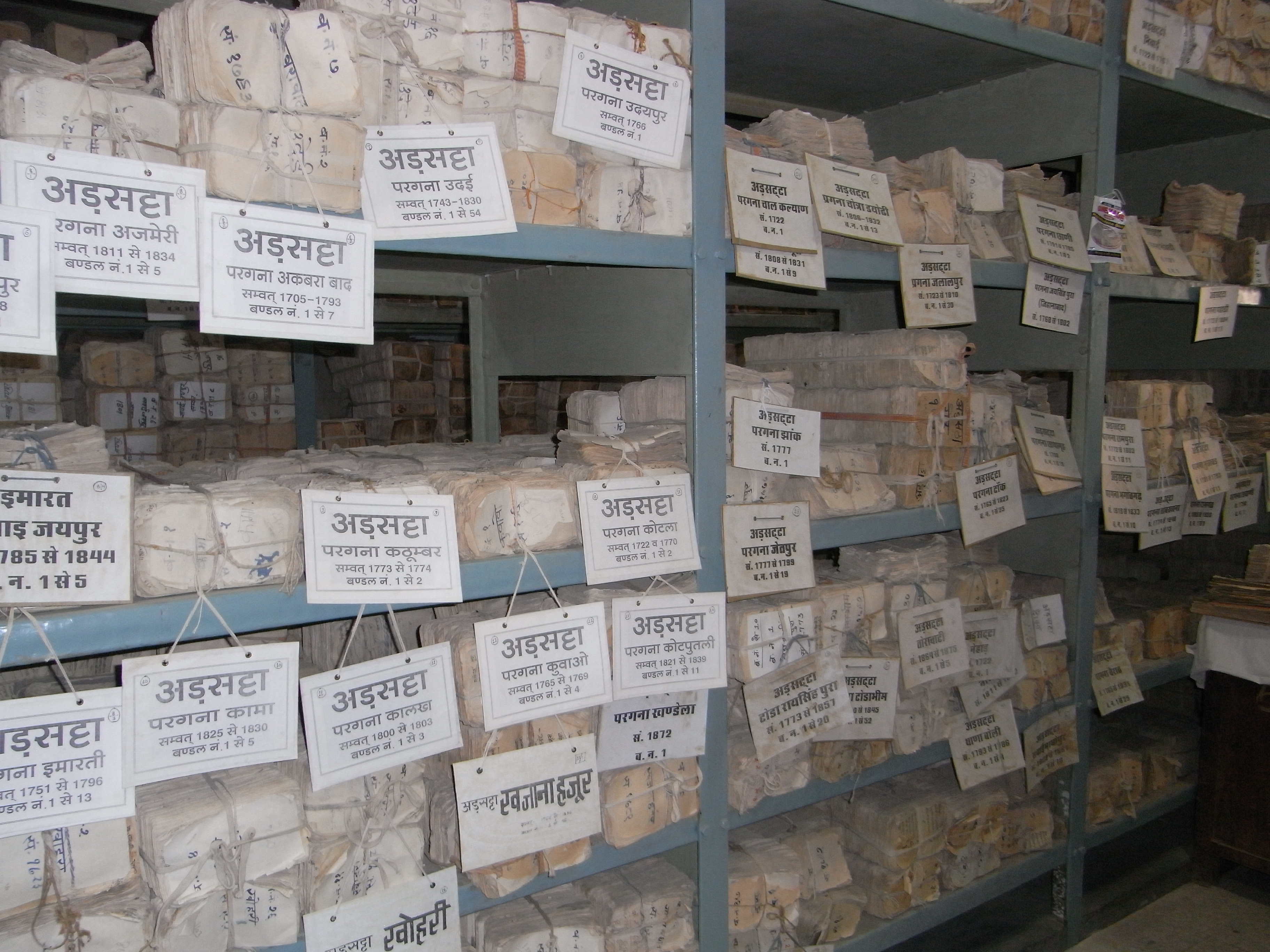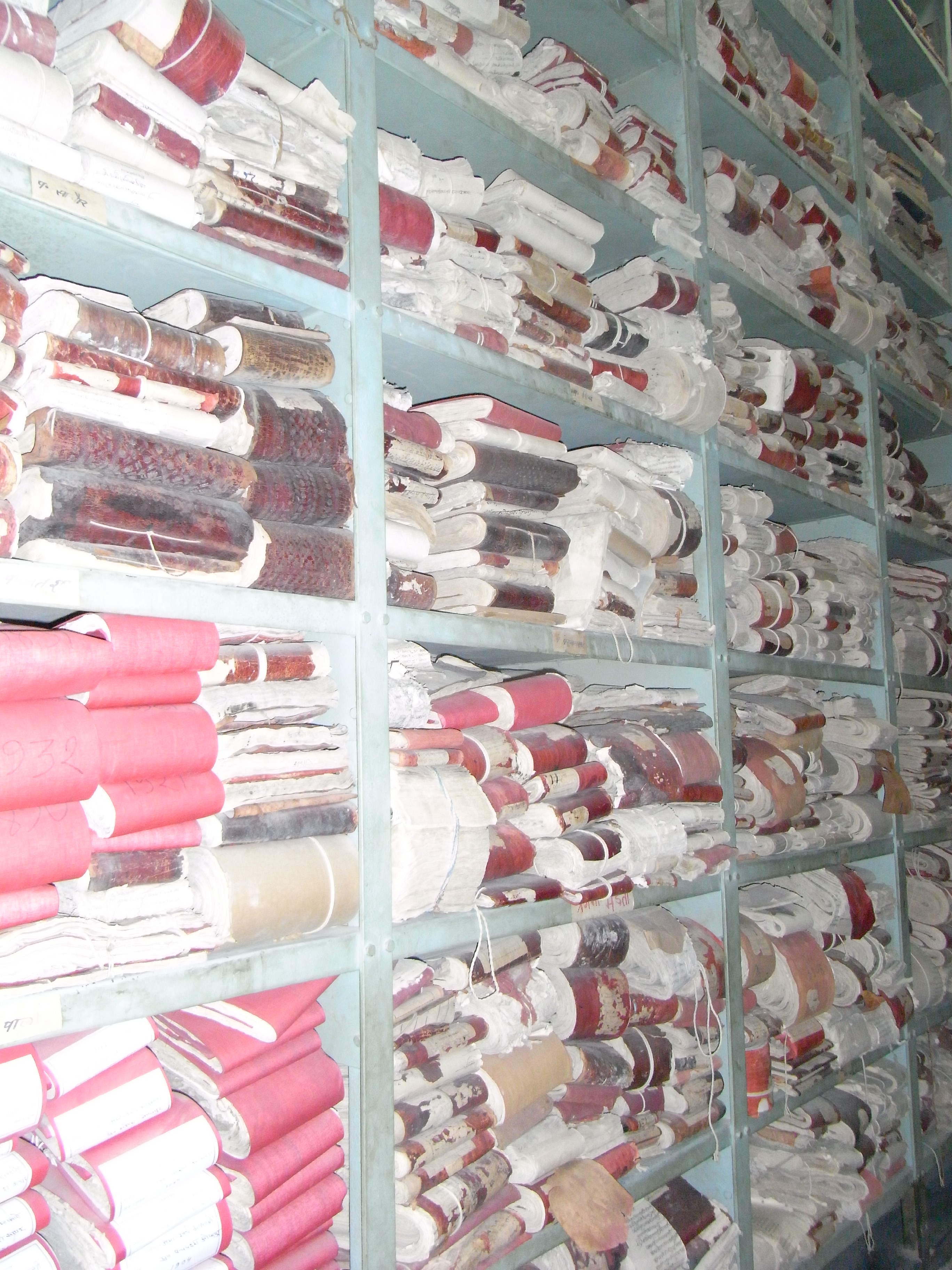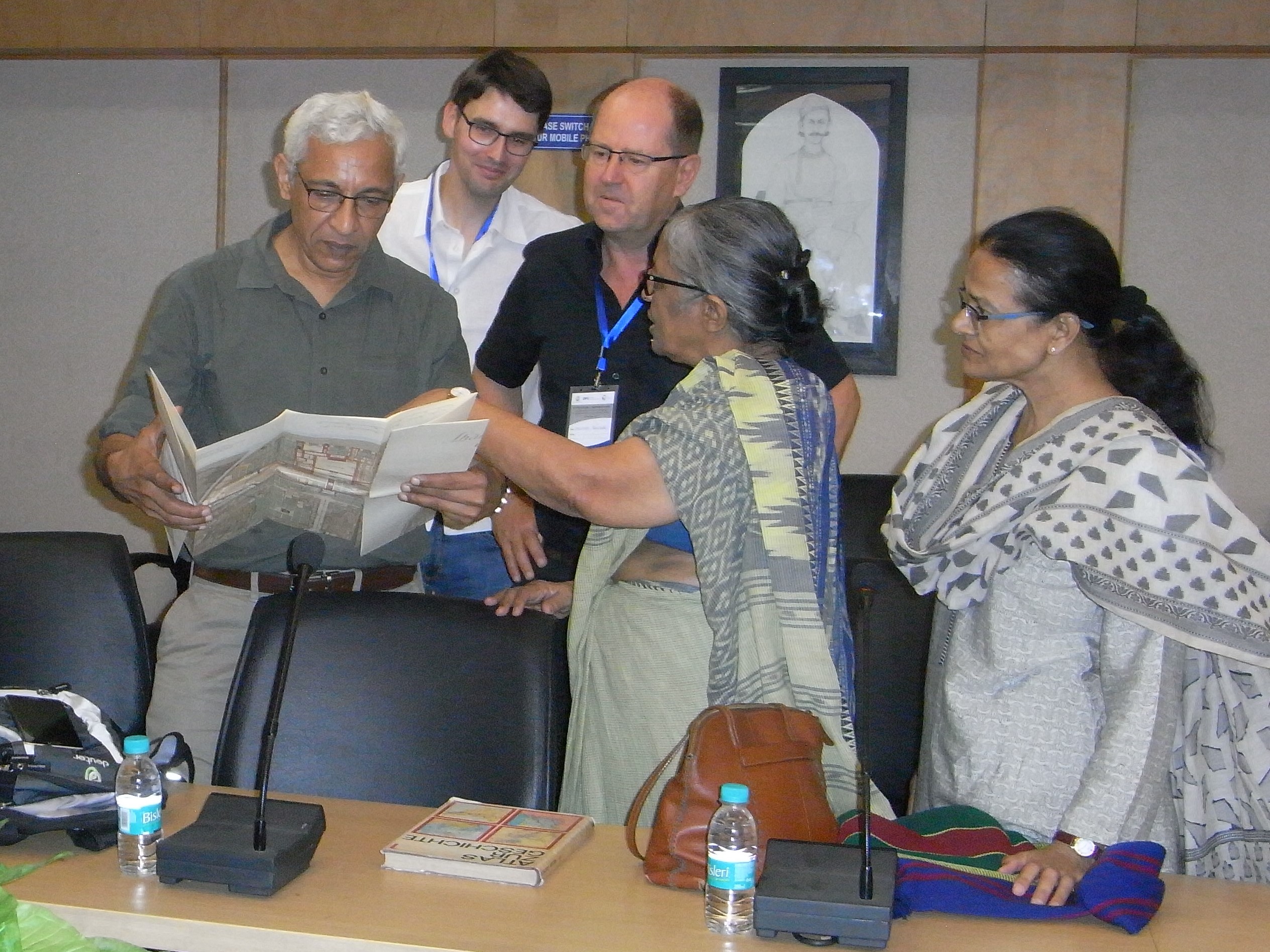Small Initiation Leading to Bigger Consortia - “Entangled Cartographies”
Prof. Susanne Rau and Prof. Gopinath Ravindran
Initiation Workshop in New Delhi
© Prof. Susanne Rau
1) Could you describe your joint project’s objective in one or two sentences?
The main objective of the project (a grant to support the initiation of international collaboration) was to further enhance opportunities for collaborative research activities between Indian and German historians and to identify common fields of interest. Therefore, we organized an international conference in Delhi (Oct 2017) and visited map holding institutions in Germany (Berlin, Erfurt, Gotha) and India (Delhi, Bikaner, Mumbai, Pune, Chennai, Kolkata) in 2017 and 2018.
The starting idea of the project was that both Europe and India are part of the land mass conceptualized as Eurasia, and although they lie far apart, cultural and commercial relations connected the regions at least since the 15th century on a regular basis that is historically well documented. We wanted to know how space and distance were understood and recorded in these two contexts and how spatial representation developed and why it changed over time. Studying the entangled history of cartography with studies from Germany and India, we felt would provide a good initial academic exchange to explore and formulate more detailed projects in this emerging area of spatial humanities.
Initiation Workshop in New Delhi
© Prof. Susanne Rau
2) What about the results? Why are they interesting? What excites you about this?
The exploratory workshop served as a kind of learning platform where the participants exchanged their (respective) state of the art and discussed future possible collaboration after having identified common fields of interest. Especially, the Indian participants expressed the strong wish to learn more about historical cartography, how to study it systematically and how to interpret maps as a historical ‘source’ and to integrate them into larger historical studies. Some of the surprises were, however, that in the colonial period, not only Europeans made maps of India, there were also several Indians drawing maps for the Europeans under their supervision. But, despite all “entanglements” in cartography, the relation between Europe and India was asymmetric for a long time. Having said this, the indigenous mapping tradition was not totally absent in India, but the commonly observed mode of spatial representation in the early period was dominated by topographical lists, chronicles, descriptions and cosmographical representations than geographic maps in a narrower sense.
Maps in India that paid attention to scale and geodesy had to wait till the Europeans began mapping the country for territorial expansion, economic gain and administration. During the conference and in several subsequent meetings and site visits a number of Indian scholars realized the possibilities of doing research in history of cartography and of mapping while German scholars were made familiar with sources available in India for conducting historical cartography projects despite the fact that India does not have a long history of “modern” maps.
We are currently preparing a joint publication that will go beyond the contributions to the conference, which – following the DFG’s program – had almost exclusively German and Indian participants.
3) Tell us about how the Indian and German teams work together: what are each side’s tasks, and how do they hang together?
Since no personnel funds were financed through this DFG funding line, one cannot speak of two research teams working together here. The cooperation mainly took place via the two project leaders (Gopinath Ravindran and Susanne Rau); in preparation for the conference, we set up a virtual communication platform, and in addition, several mutual visits to each other’s countries took place (which is by no means easy and unbureaucratic in view of visa regulations).
4) Would you tell us about how this collaboration started? How did you find out about each other, and about each other’s work? What happened then?
It all began with the efforts of DFG and ICHR to promote exchange and research cooperation in both countries. As part of this, Susanne Rau was invited to travel to India (in 2015) and gave a couple of lectures in different Indian universities and ICHR centres. This was followed by further discussions via email and especially in Hamburg, during the 2016 “Historikertag” where India was the partner country. Prof. Gopinath Ravindran was invited to give a talk there. We realised that the spatial humanities in India were yet to be fully explored and came up with a joint project on maps for sustained collaboration. For this purpose, we have chosen the entanglement approach in order to get away from a pure comparative perspective or even a transfer perspective. Nevertheless, it was in such a way possible to address spatiality and historical cartography (a research gap in Indian historiography). In order to explore further research topics, the Delhi conference in 2017 was an important first step.
5) Apart from the scientific results: are there interesting lessons you can share about the collaboration, the mix of research cultures, or about the project’s effects on you personally?
The conference (which included shared meals and a guided tour of Delhi) and the reciprocal visits such as joint visits to map collections have also generated new contacts beyond the primary objectives and enabled joint work in other fields. After the nomination of Gopinath Ravindran as Vice-Chancellor of the University of Kannur in 2017, Susanne Rau and Christoph Bernhardt (IRS Erkner) came – independently – to Kannur, gave a lecture and visited other parts of the country. As part of the DFG programme Gopinath Ravindran spent 2 weeks in Erfurt where the collaboration between the universities of Erfurt and Kannur was formalized in a MoU. This serves as a basis for further exchange projects. Since 2018, the DFG has also been funding the Humanities Centre for Advanced Studies “Religion and Urbanity: reciprocal formations” (FOR 2779), the development of which was made possible not least on the basis of this grant and which now cooperates with many other Indian universities.
An indirect outcome of the themes discussed at the Delhi conference was the development of an elective Masters programme course on digital humanities in Kannur University.
All this suggests that even small “grants to support the initiation of international collaboration” can generate further collaborations and bigger research projects.
The in-person interaction between participating researchers and the exposure to country specific research protocols, practices and introduction to new repositories of information greatly contributed to the development of new areas for collaborative research. Further, it helped to understand how future scientific research projects could be designed considering practical institutional limits and the intellectual strengths of the collaborators.
Answers by: Susanne Rau (Erfurt) and Gopinath Ravindran (Kannur), Editing by Franziska Langer
For further information please get in contact with us at: India@dfg.d
